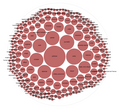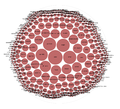Wikimedia Blog/Drafts/Using Visualizations based on Wikidata to Identify Knowledge Gaps on Wikipedia
|
This page is currently a draft. More information pertaining to this may be available on the talk page. Translation admins: Normally, drafts should not be marked for translation. |
Title ideas
[edit]- Ideally three to ten words, the headline to your piece will show up in social media shares and on the blog's homepage. Try to capture the most interesting part of your piece.
- Visualizing Wikipedia Knowledge Gaps. Using data visualizations based on Wikidata to identify Wikipedia knowledge gaps.
- Invisible. According to Wikidata the number of articles on Wikipedia about people born in Africa is extremely limited compared to people born in Germany, France and Turkey.
- Women have the smallest slice of this little cake. According to Wikidata, the percentage of women born in Africa in XIX and XX century with a Wikipedia article is 15-20%.
Summary
[edit]- A brief summary of the post's content, about 20-50 words. On the blog, the summary will appear in italicized text underneath the headline. You can use this space as a teaser, expansion of your headline, or as a summary of the post.
- We have compared data from Wikidata to define the knowledge gaps on the Wikimedia projects about Africa. The resulting visualizations helped us to make the gaps more understandable to anyone.
Body
[edit]- What do you want to tell the world? Put it here. The best imagery helps convey your most basic ideas without doing it overtly. Ideas on introductions and writing style can be found in our guidelines.


To support the research project Wikipedia Primary School, the Laboratory of visual culture at the University of Applied Sciences and Arts of Southern Switzerland (SUPSI) experimented the use of Wikidata to generate data visualizations and communicate the knowledge gaps about Africa that exist on the Wikimedia projects.
Wikidata acts as central storage for the structured data of Wikimedia sister projects. The database allows expert users to develop query and to generate big data sets. From 6th to 9th February, we run a hands-on and intensive workshop in Lugano to understand how to retrieve data on Wikidata and to generate visualizations that highlight the missing knowledge on Wikipedia.
Thanks to the support of Florence Devouard about the Wikimedia projects and Jens Ohlig about Wikidata, we have explored how to break down in Wikidata queries fundamental research questions regarding the typologies and qualities of biographies of notable persons from Africa. We started working on this topic in order to build upon a good example of data visualization created by the Oxford Internet Institute about the distribution of biographies of notable people throughout history. The goal was to dig into this topic by manipulating large datasets and by sharing with the community pictures of the gaps existing between Africa and a selection of European counties with the largest population. In the comparison, Africa simply disappears. We have validated our hypothesis by finding an evidence into the data and by visualizing the gap.
The workshop had the goal to test a process and a method to work with Wikidata which is a tool still requiring competences from expert users. Moreover, we aimed to validate a format that can be replicated in future workshops addressing the topic of knowledge gaps on the Wikimedia projects. The process and the full credits are documented on the workshop page on meta.
According to Wikidata, percentage of women and men, born in Africa between 1800-1999, with article on Wikipedia compared to Germany, Italy and Switzerland.
-
Africa
-
Germany
-
Switzerland
-
Italy
According to Wikidata, professions of men and women born in Africa with an article on Wikipedia.
-
Men 1800-1899
-
Men 1900-1999
-
Women 1800-1899
-
Women 1900-1999
Dr. Serena Cangiano, Giovanni Profeta, Marco Lurati, Fabian Frei, Florence Devouard, Dr. Iolanda Pensa
Laboratory of visual culture at the University of Applied Sciences and Arts of Southern Switzerland (SUPSI)








